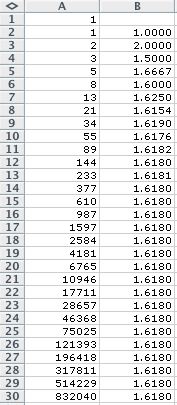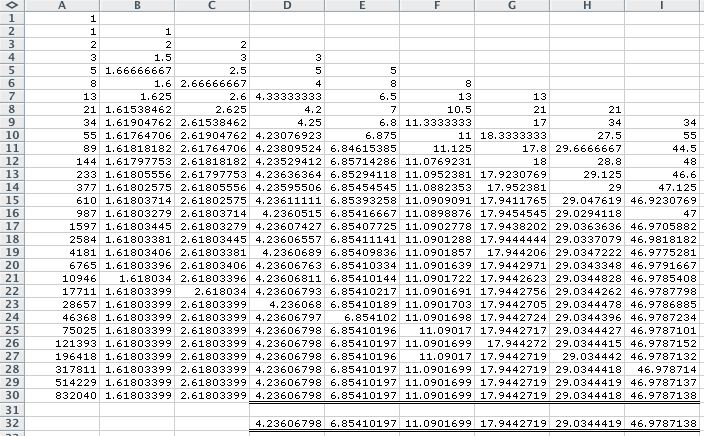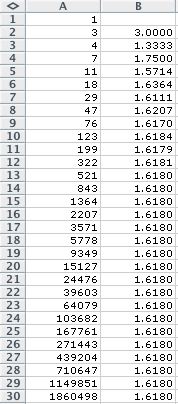
__________________________________________________________________________________________________________________________________________
What is a spreadsheet?
A spreadsheet is software used to facilitate the manipulation of large amounts of data. For example, if one wanted to sort the phone book by last name, first name, address, or phone number, it could be accomplished by inputing the data into a spreadsheet and using the sort command by perference. There are many commands in spreadsheets that can expedite data entry, as well.
Let's consider the ramifications of this software on mathematics by exploring a couple of well-known number sequences. For these explorations, we will use Microsoft Excel.
__________________________________________________________________________________________________________________________________________
Fibonnaci Sequence
This number sequence looks like this:
The first two numbers in the sequence can be entered into a spreadsheet and the infinite numbers that follow can be found using a simple formula in the subsequent cells of the spreadsheet. Do we need to manually enter the formula in each subsequent cell? NO! We can simply enter the formula, "=A1+A2", into A3 and fill the entire column with this formula (A is the column and 1, 2, 3, ... is the row) :

Viola...the beginning of the Fibonnaci sequence! Now, let's look at the ratio of each pair of adjacent terms in the Fibonnaci sequence:

What happens as n increases? Well, we see the ratio reaching a number of approximately 1.618 -- the golden ratio!
Now, what about the ratio of every second term, third term, etc.?
 <===
Fibonnaci Sequence used here!
<===
Fibonnaci Sequence used here!Each column, starting with B, represents the ratio of adjacent terms, every other term, third term, fourth term, fifth term, etc. Two observations from this investigation are: 1) the Fibonnaci sequence continues diagonally as the first ratio number, and 2) the Fibonnaci formula is discovered by comparing the addition sequence of the ratios by row (i.e. notice how the last row of ratios compare to the row underlined below it) -- the two underlined rows match!!!
__________________________________________________________________________________________________________________________________________
Lucas Sequence
This number sequence has the same formula as the Fibonnaci sequence; however, f(0) = 1 and f(1) = 3:

Notice how the ratio reaches a number of approximately 1.618 -- the golden ratio, again!!!
__________________________________________________________________________________________________________________________________________